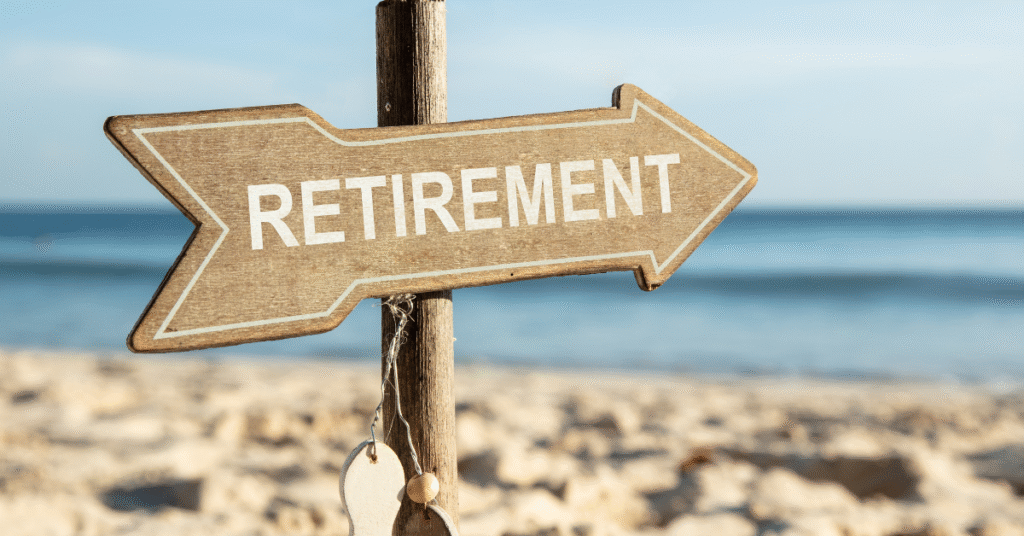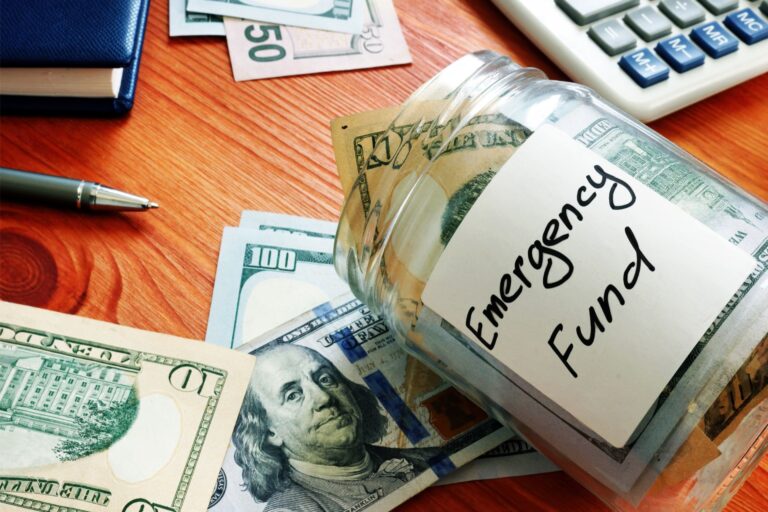How To Improve Your Finances: 9 Sure-Fire Ways

Let’s be real for a second, money stress sucks. You know that feeling when you check your bank account and your heart does a little flip? Yeah, not fun. But here’s the thing: you don’t need to be pulling in six figures to get your financial life together.
I’ve spent years studying finance (yep, got the degrees to prove it), and I’ve learned that improving your finances isn’t about some magic formula. It’s about making smart, consistent moves that actually stick. So grab your coffee, get comfy, and let’s talk about how you can finally take control of your money without needing a finance PhD.
How Do I Improve My Finances?
Alright, so you’re probably wondering where to even start, right?
Improving your finances boils down to three core moves: increasing what comes in, managing what goes out, and protecting what you’ve got. Sounds simple? It is, but simple doesn’t always mean easy.
Think of your finances like a leaky bucket. You can pour all the water you want into it, but if there are holes at the bottom, you’ll never fill it up. Your job is to patch those holes (unnecessary expenses), keep pouring water in (income streams), and make sure nobody’s poking new holes when you’re not looking (unexpected costs).
The beauty of this approach? You don’t need a massive salary to see results. I’ve watched people earning $40k a year build impressive savings while folks making $100k live paycheck to paycheck. The difference? Intentionality with money.
What Does It Mean To Improve One’s Finances?
Here’s where people get confused. They think improving finances means becoming rich overnight or winning the lottery (spoiler alert: not happening).
Financial improvement is about progress, not perfection. It means you’re in a better spot this month than you were last month. Maybe you paid off $500 of debt. Probably you finally opened that savings account. Maybe you stopped buying lunch out five times a week and saved $200.
From my perspective as someone who’s helped clients navigate their finances, improvement means creating breathing room. It’s the difference between panicking when your car breaks down and calmly handling it because you’ve got an emergency fund. It’s saying no to that credit card offer because you know better now.
IMO, the biggest sign you’re improving? When money stops keeping you up at night.
Benefits Of Improving Your Finances
Let me paint you a picture of what happens when you get your financial act together. These aren’t just theoretical benefits; this is real-life stuff that actually matters.
You Can Reduce Financial Stress
Ever notice how money problems creep into everything else? Your relationships, your work performance, even your health?
Financial stress is insidious. It shows up as that knot in your stomach when bills are due, the arguments with your partner about spending, the sleepless nights running calculations in your head. According to research from the American Psychological Association, money is consistently one of the top stressors for adults.
But here’s what I’ve observed: when you’ve got even a modest financial cushion, say, $1,000 in savings, that stress drops dramatically. You’re not living on the edge anymore. That’s powerful stuff.
You Can Tap Into New Opportunities
This one drives me crazy because I see people miss out on life-changing opportunities all the time simply because they’re not financially prepared.
Last year, my friend Sarah got offered a chance to invest in her colleague’s startup, a business that’s now valued at $2 million. She couldn’t participate because she was drowning in credit card debt. Meanwhile, another friend who’d been diligently saving invested $5,000 and turned it into $45,000 within two years.
Opportunities don’t wait for you to get your finances together. They show up when they show up. Your job is to be ready when they knock.
You Can Offer Financial Support
Look, I’m not saying you should become everyone’s personal ATM. But there’s something genuinely fulfilling about being able to help when someone you care about is struggling.
Maybe it’s helping your parents with medical bills, contributing to your niece’s college fund, or just treating your friend to dinner when they’ve had a rough month. When your finances are solid, generosity doesn’t hurt; it feels good.
I’ll never forget being able to help my younger brother avoid student loans by covering part of his tuition. That was only possible because I’d spent years building my financial foundation. That feeling? Priceless.
Successful Retirement

Here’s a wake-up call: the average American has less than $200,000 saved for retirement. And we’re living longer than ever, some experts say; today’s 30-year-olds might live to 100.
Do the math. That’s not going to cut it.
Planning for retirement isn’t about being pessimistic; it’s about being realistic. Starting early with even small contributions can turn into substantial wealth thanks to compound interest. A 25-year-old investing $200 monthly could have over $500,000 by age 65 (assuming a 7% return). Wait until 35? You’ll have about half that amount.
Time is your biggest asset here. Use it wisely.
You Will Adopt Good Money Habits
This benefit sneaks up on you. When you start tracking expenses, budgeting, and making intentional financial decisions, something weird happens: it becomes automatic.
Without thinking about it, you start comparing prices. You naturally question purchases instead of impulse buying. You check your account balance regularly instead of avoiding it out of fear. These habits compound over time, creating a financial discipline that serves you for life.
I’ve seen this transformation countless times. People who thought they were “just bad with money” become savvy financial managers. It’s not about talent, it’s about practice.
9 Sure-Fire Ways To Improve Your Finances
Okay, enough theory. Let’s get into the actionable stuff that actually moves the needle on your financial situation.
1. Educate Yourself On Personal Finance
I’m going to be blunt: if you’re not learning about money, you’re leaving money on the table.
Financial education isn’t optional anymore; it’s survival. The good news? You don’t need to go back to school. There are literally thousands of free resources available right now.
Start with books. I recommend “The Psychology of Money” by Morgan Housel or “Your Money or Your Life” by Vicki Robin. These aren’t dry textbooks; they’re readable, practical guides that actually make sense.
Try podcasts during your commute. “The Dave Ramsey Show,” “BiggerPockets Money,” and “ChooseFI” are goldmines of practical advice. I listen to at least three finance podcasts weekly, and I still learn something new every time.
Follow credible finance creators on YouTube or social media. Just be careful, there’s a lot of garbage advice out there promising get-rich-quick schemes. If something sounds too good to be true, it probably is.
FYI, the financial education industry is worth billions because this knowledge is valuable. Take advantage of the free stuff before considering paid courses.
2. Stop Spending With Credit Cards

Okay, controversial opinion alert: credit cards are not your friend when you’re trying to improve your finances.
I know, I know, you’ve heard about the rewards points, the cashback, the credit score benefits. And yes, all of that exists. But here’s what also exists: the average American household carrying $6,270 in credit card debt at 20%+ interest rates.
Let me break down why credit cards are dangerous. When you swipe plastic, your brain doesn’t register the pain of spending the same way it does with cash. MIT researchers found that people spend up to 100% more when using credit cards versus cash. That’s not a small difference!
Here’s my approach: if you can’t pay off your credit card in full every month, you shouldn’t be using one. Period. Switch to a debit card or cash until you’ve built the discipline to treat credit cards like a payment tool, not a loan.
I went cash-only for six months early in my career, and it was eye-opening. Suddenly, every purchase felt real. My spending dropped by 30% without any feeling of sacrifice. Try it for just one month and watch what happens.
3. Prioritise Budgeting
Let’s talk about the B-word: budgeting. I know it sounds boring. I know it feels restrictive. But hear me out, a budget isn’t about limiting your life; it’s about funding it intentionally.
Think of a budget like a GPS for your money. Without it, you’re just driving around hoping you’ll end up somewhere good. With it, you’re following a clear path to your destination.
Here’s my simplified budgeting framework (forget complicated spreadsheets for now):
The 50/30/20 Rule:
- 50% for needs (rent, utilities, groceries, transportation)
- 30% for wants (dining out, entertainment, hobbies)
- 20% for savings and debt repayment
Is this perfect for everyone? Nope. But it’s a solid starting point. If you’re living in an expensive city, you might need to adjust to 60/20/20. If you’re aggressively paying off debt, maybe go 50/20/30.
Pro tip: Use budgeting apps like YNAB (You Need A Budget), Mint, or EveryDollar. These tools automatically categorise your spending and show you exactly where your money goes. Game-changer.
The biggest mistake people make? Creating a budget and never looking at it again. Review your budget weekly; it takes 10 minutes and keeps you on track.
4. Track Your Spending
Pop quiz: How much did you spend on food last month? Groceries and restaurants combined. Go ahead, guess.
If you’re like most people, you’re probably off by 30-50%. We’re terrible at estimating our spending without tracking it.
Tracking your spending is like weighing yourself when you’re trying to lose weight; you can’t improve what you don’t measure. It sounds tedious, but modern technology makes it ridiculously easy.
Here’s how I do it:
I use apps that automatically categorise transactions from my bank accounts. Every Friday morning (coffee in hand), I spend 15 minutes reviewing the week’s spending. I look for:
- Unexpected charges (Did I really need that impulse Amazon purchase? :/
- Recurring subscriptions (Am I still using that streaming service?)
- Category overspending (Did I blow my restaurant budget again?)
After three months of tracking, patterns emerge. You’ll spot the “money leaks”, those $8 coffee runs that add up to $240 monthly, the subscription services you forgot existed, the “small” online purchases that total $500.
Real talk: In my first month of serious tracking, I discovered I was spending $340 monthly on food delivery. That’s over $4,000 annually! Simply becoming aware of this pattern helped me cut it by 70% without feeling deprived.
5. Build An Emergency Fund

Let me tell you a quick story. Three years ago, my water heater exploded at 2 AM. Water everywhere, chaos. The replacement cost? $1,800.
Old me would’ve panicked, pulled out a credit card, and spent months paying it off with interest. But because I had an emergency fund, I wrote the check, got it fixed, and moved on with my life. The peace of mind? Absolutely worth it.
Your emergency fund is your financial security blanket. It’s what stands between you and financial disaster when life throws curveballs (and trust me, it will).
How much should you save? The traditional advice is 3-6 months of expenses. But let’s be practical:
- Start with $1,000 as your initial goal
- Then build to one month of expenses
- Gradually expand to 3-6 months as you can
Where should you keep it? High-yield savings accounts are perfect for emergency funds. Check out options like Marcus by Goldman Sachs, Ally Bank, or American Express Personal Savings. These accounts currently offer 4-5% APY (rates vary), meaning your emergency fund actually grows while sitting there.
Important: This money is for emergencies ONLY. Not for vacations, not for a new TV, not for holiday shopping. Actual emergencies: job loss, medical expenses, car repairs, home emergencies.
6. Plan For Retirement
I’m going to say something that might sting: if you’re not saving for retirement in your 20s or 30s, you’re gambling with your future.
Here’s the harsh reality: Social Security probably won’t be enough to live on when you retire. The average monthly benefit is around $1,800. Can you live comfortably on that? For most of us, the answer is no.
The power of compound interest is insane. Let me show you with actual numbers:
- Person A starts investing $300/month at age 25. By 65, they’ll have approximately $877,000 (assuming 7% annual return).
- Person B waits until 35 and invests $300/month. By 65, they’ll have approximately $412,000.
Same monthly contribution, but Person A has more than twice the money because they started 10 years earlier. Those early years matter exponentially.
What should you do?
If your employer offers a 401(k) with matching, contribute at least enough to get the full match; that’s literally free money. If they match up to 6%, contribute 6%. That’s an instant 100% return on your investment. You can’t beat that.
Next, consider opening a Roth IRA through Vanguard, Fidelity, or Charles Schwab. You can contribute up to $7,000 annually (as of 2024), and it grows tax-free. When you retire, you withdraw it tax-free. Beautiful.
Keep it simple: Invest in low-cost index funds like VTSAX (Vanguard Total Stock Market Index) or S&P 500 index funds. Don’t try to pick individual stocks unless you really know what you’re doing. Set up automatic contributions and let time do its thing.
7. Cut Down On Costs
Cutting costs doesn’t mean living like a hermit, eating ramen every night. It means being intentional about where your money goes.
Let me share some practical cost-cutting strategies I’ve personally used:
Housing: This is typically your biggest expense. Can you get a roommate? Move to a slightly less trendy neighbourhood? Refinance your mortgage if rates drop? I once saved $400 monthly by moving 20 minutes further from downtown. Was it less convenient? Slightly. But that $4,800 annually went straight into investments.
Transportation: Do you really need that car payment? Could you buy a reliable used car instead of a new one? I drove a 12-year-old Honda for years while making good money; people thought I was crazy, but I was building wealth. Also, could you carpool, bike, or use public transit a few days a week?
Subscriptions: Pull up your bank statement right now. How many recurring subscriptions do you see? Netflix, Hulu, Disney+, Spotify, gym membership, meal kit service, beauty boxes, app subscriptions… The average person spends $273 monthly on subscriptions. Audit these ruthlessly. Keep what you actually use; cancel the rest.
Food: This is where most people haemorrhage money. Meal planning and grocery shopping can cut your food costs by 60% compared to eating out. I’m not saying never eat out, I’m saying be intentional about it. Cook at home most nights, pack lunches, and make restaurant meals for special occasions rather than defaults.
Insurance: When’s the last time you shopped around for insurance? Most people overpay because they never compare rates. Spend an hour checking quotes for car, home, and life insurance. I recently saved $840 annually by switching car insurance providers, same coverage, lower price.
Utilities: Simple stuff makes a difference. LED bulbs, programmable thermostats, and unplugging devices you’re not using. Sounds minor? It can save $30-50 monthly. That’s $600 annually for essentially zero effort.
Remember: every dollar you don’t spend is a dollar you can save or invest. Small cuts compound into big savings over time.
8. Improve Your Savings Rate
Your savings rate is the percentage of your income you save. If you earn $4,000 monthly and save $800, your savings rate is 20%.
This number matters more than almost anything else in your financial life. Why? Because it directly determines how quickly you can build wealth and achieve financial independence.
Let me blow your mind with some math: If you save 50% of your income, you can retire in about 17 years. Save 20%? You’ll work for about 37 years. Save 10%? You’re looking at 51 years of work. (These calculations assume you maintain your current lifestyle in retirement.)
How do you improve your savings rate? Two ways: earn more or spend less. Ideally, both.
Earning more:
- Ask for a raise (seriously, most people never ask and miss out on thousands)
- Develop new skills that make you more valuable
- Start a side hustle (Fiverr, Upwork, freelancing)
- Sell stuff you don’t use on Facebook Marketplace or eBay
Spending less:
- Implement everything from point #7 (cut costs)
- Question every purchase: “Do I need this, or do I want my financial goals more?”
- Wait 48 hours before big purchases to avoid impulse buys
Here’s what worked for me: I automated my savings. The day my paycheck hits, 20% automatically transfers to savings. I never see it, so I never spend it. Treat savings like a bill you must pay yourself first.
Even increasing your savings rate by 5% makes a massive difference over time. If you earn $50,000 annually, that’s $2,500 more saved per year. Over 20 years at 7% return, that’s an additional $120,000. Worth it? I think so.
9. Secure Your Money
You can do everything right, budget perfectly, save diligently, invest wisely, and still lose it all if you don’t protect what you’ve built.
Financial security isn’t just about making money; it’s about keeping it safe from the unexpected.
Insurance you actually need:
Health Insurance: Medical bankruptcy is real, folks. One serious illness without insurance can wipe out decades of savings. Don’t skip this.
Renter’s/Homeowner’s Insurance: Your stuff is worth more than you think. A burglary or fire could cost you $30,000+ to replace everything. Insurance typically costs $15-30 monthly for renters. No-brainer.
Auto Insurance: Beyond it being legally required in most states, one accident without insurance could financially ruin you. Shop around for competitive rates, but don’t skip coverage.
Life Insurance: If anyone depends on your income (spouse, kids, ageing parents), you need term life insurance. It’s cheap; a healthy 30-year-old can get $500,000 of coverage for about $25 monthly.
Disability Insurance: What if you couldn’t work for six months? Many people have no plan for this. Long-term disability insurance protects your income if illness or injury prevents you from working.
Cybersecurity matters too:
- Use unique passwords for financial accounts (get a password manager like LastPass or 1Password)
- Enable two-factor authentication on everything financial
- Monitor your credit regularly with free services like Credit Karma
- Freeze your credit if you’re not applying for loans (prevents identity theft)
Choose the right financial institutions:
Keep your emergency fund and savings in FDIC-insured banks. This means even if the bank fails, your money (up to $250,000) is protected by the federal government.
For investments, use reputable brokerages like Vanguard, Fidelity, or Charles Schwab. These are SIPC-insured, protecting your account up to $500,000.
Consider working with a fee-only financial advisor if your situation is complex. “Fee-only” means they charge a flat fee rather than earning commissions on products they sell you. This eliminates conflicts of interest. Find advisors through NAPFA or XY Planning Network.
Final Thoughts
Let’s wrap this up simply: you don’t need to be a financial expert, you just need consistency and intention. Start with education. Learn the basics of personal finance through good books, podcasts, or courses. Build a budget, track every dollar, and set up an emergency fund. Cut costs, kill debt, and automate savings so discipline becomes effortless.
Next, protect what you’ve built. Get proper insurance, secure your accounts, and start investing early for retirement, compound interest rewards action, not hesitation. Remember, financial success is a collection of small, smart choices repeated over time, not one big breakthrough.
So start today. Cancel one useless subscription. Open that savings account. Track your spending for a week. Small steps create big change, and your future self will thank you for every one of them.








